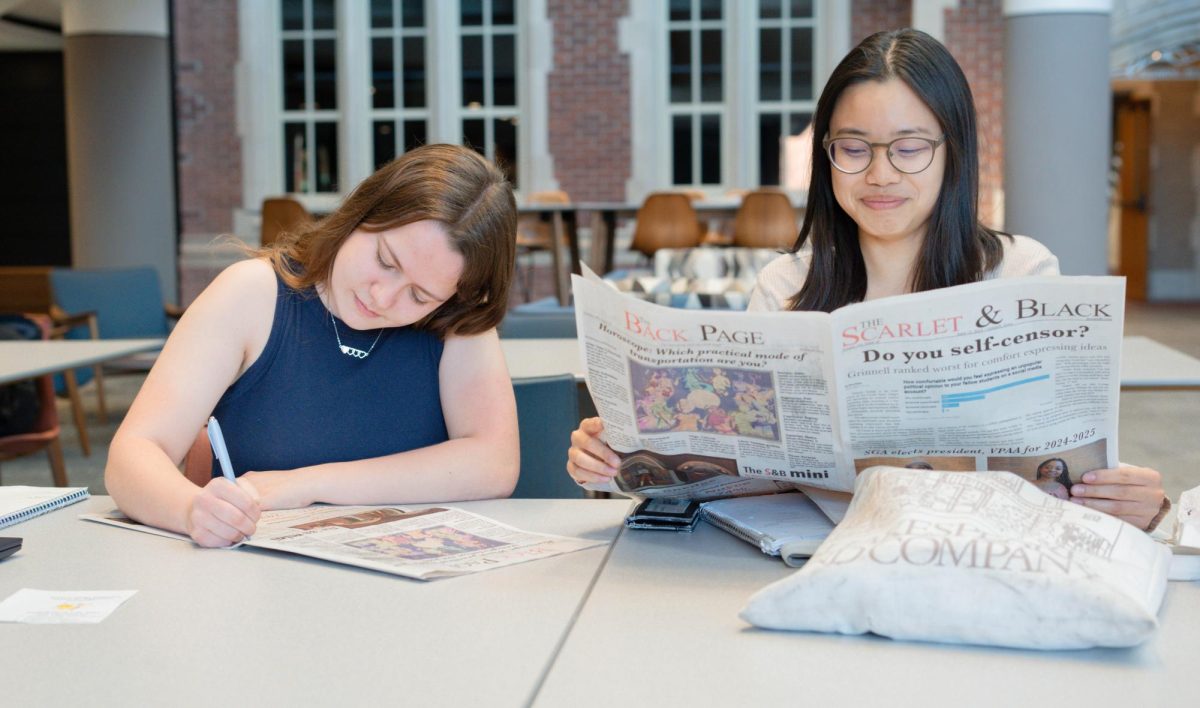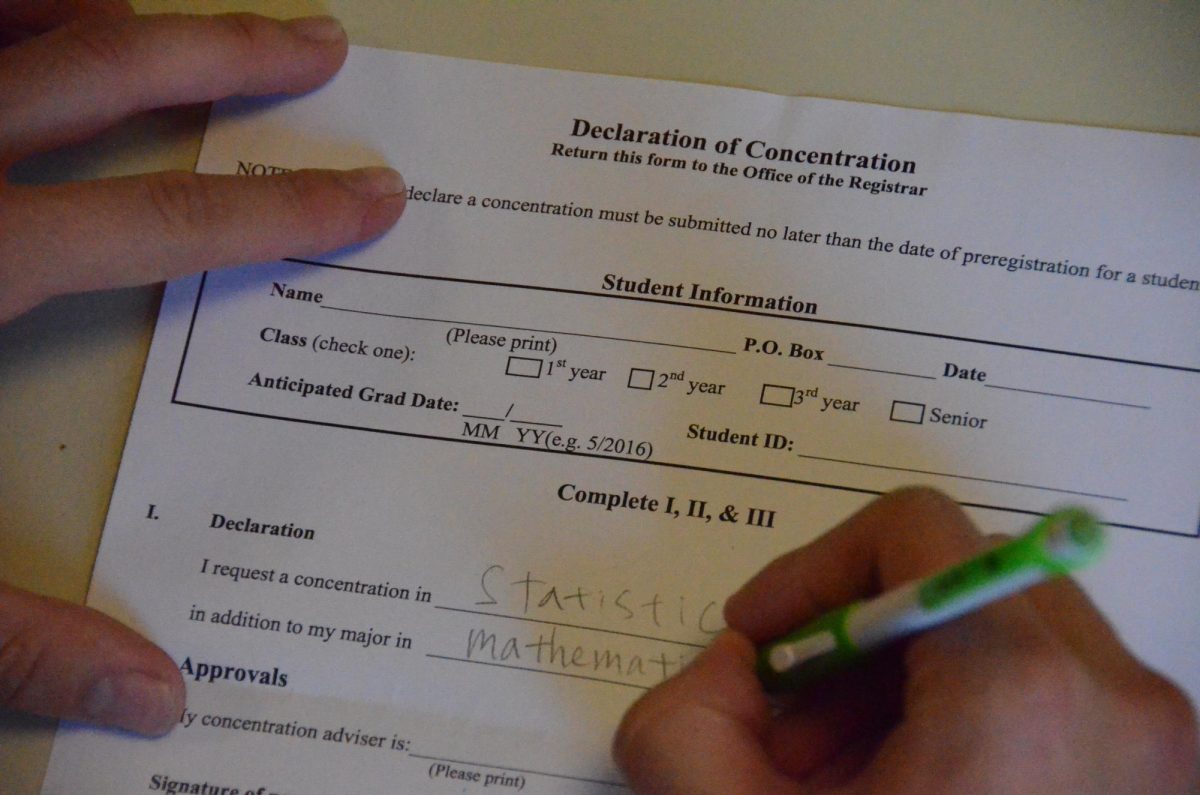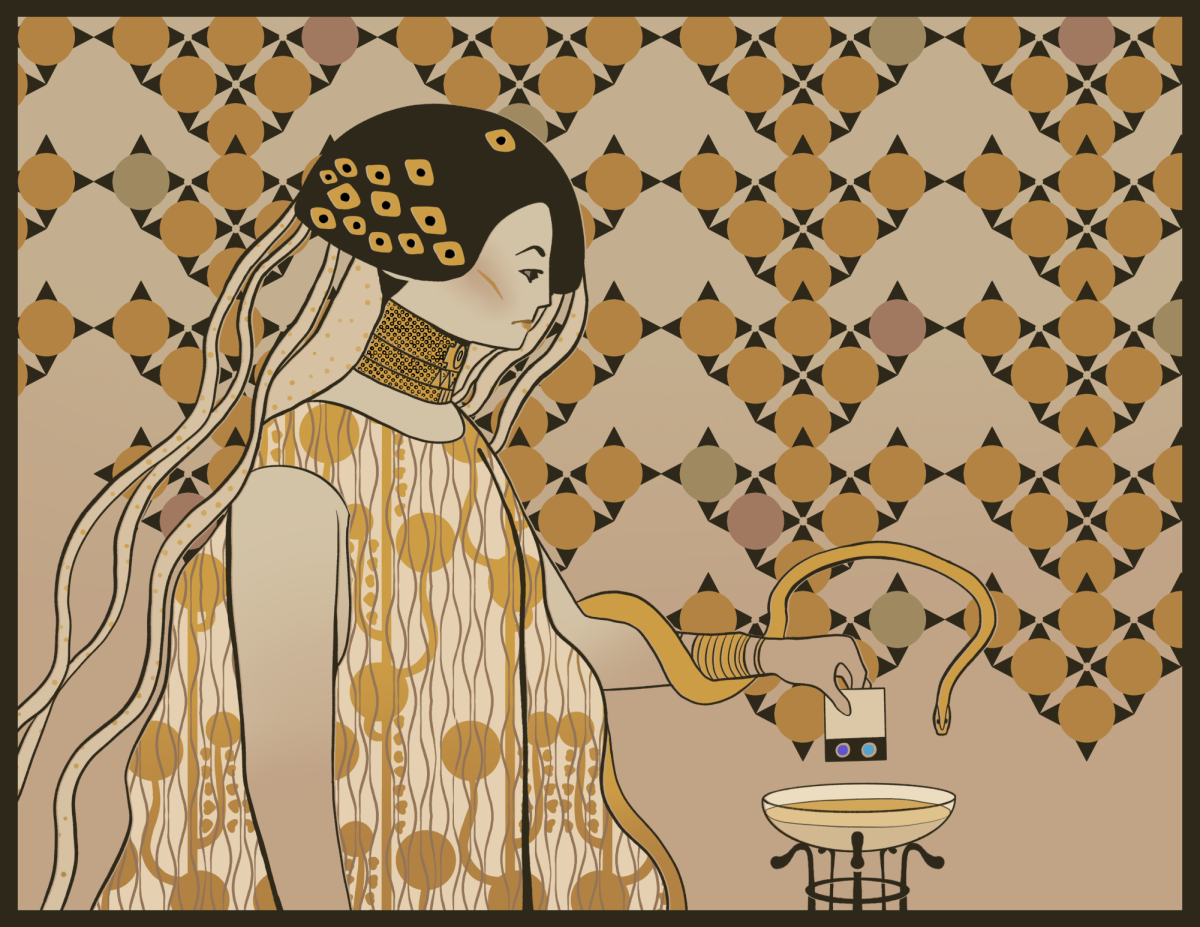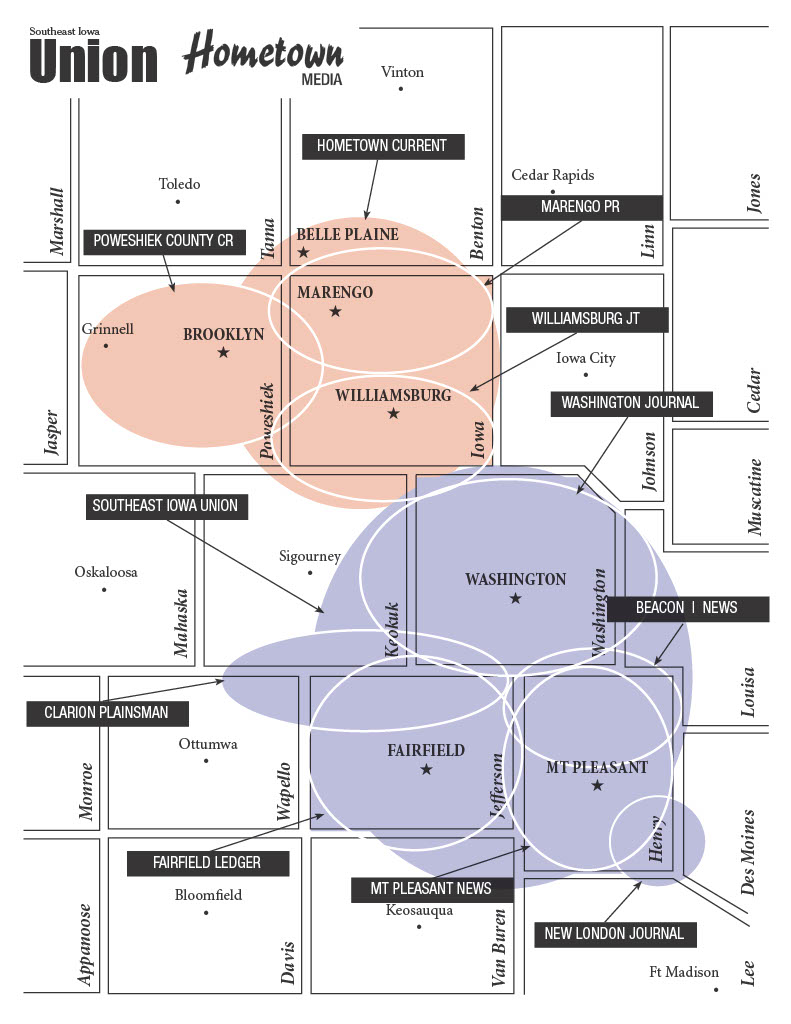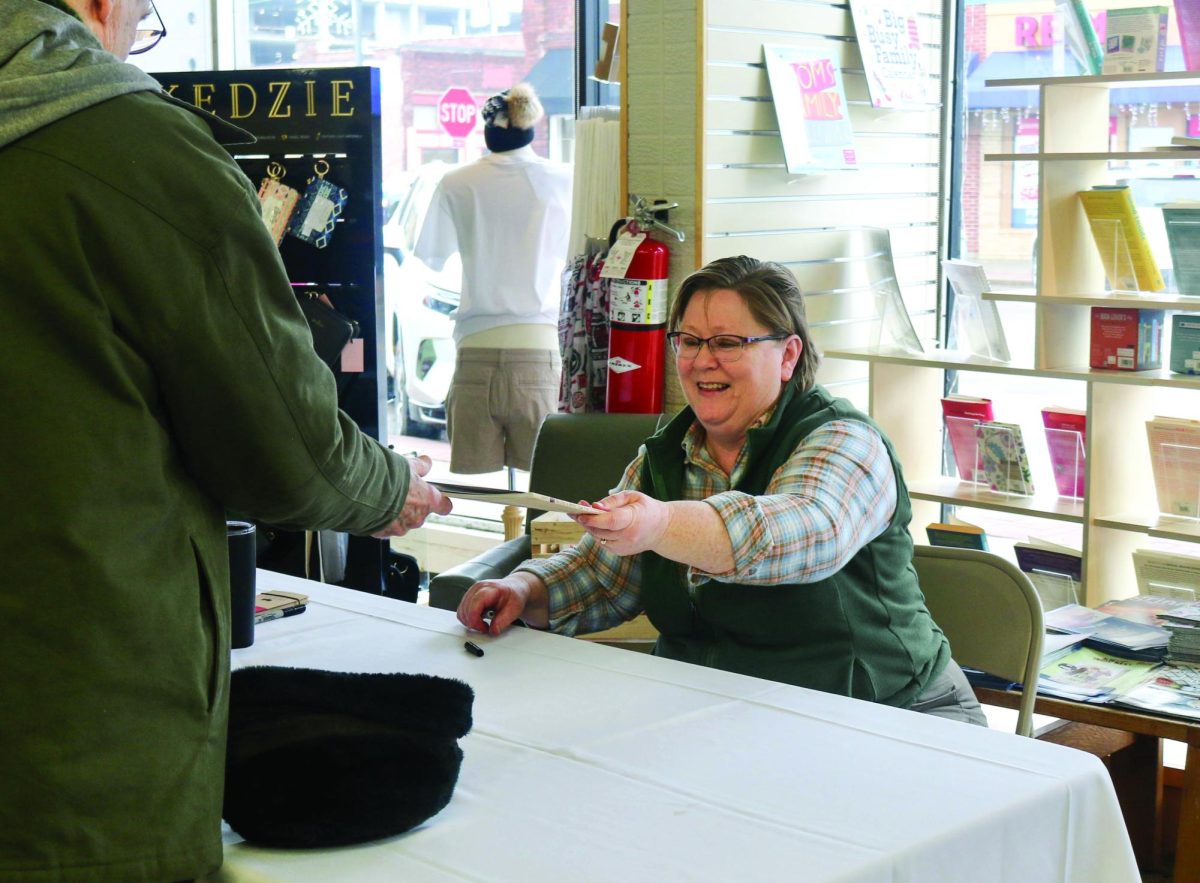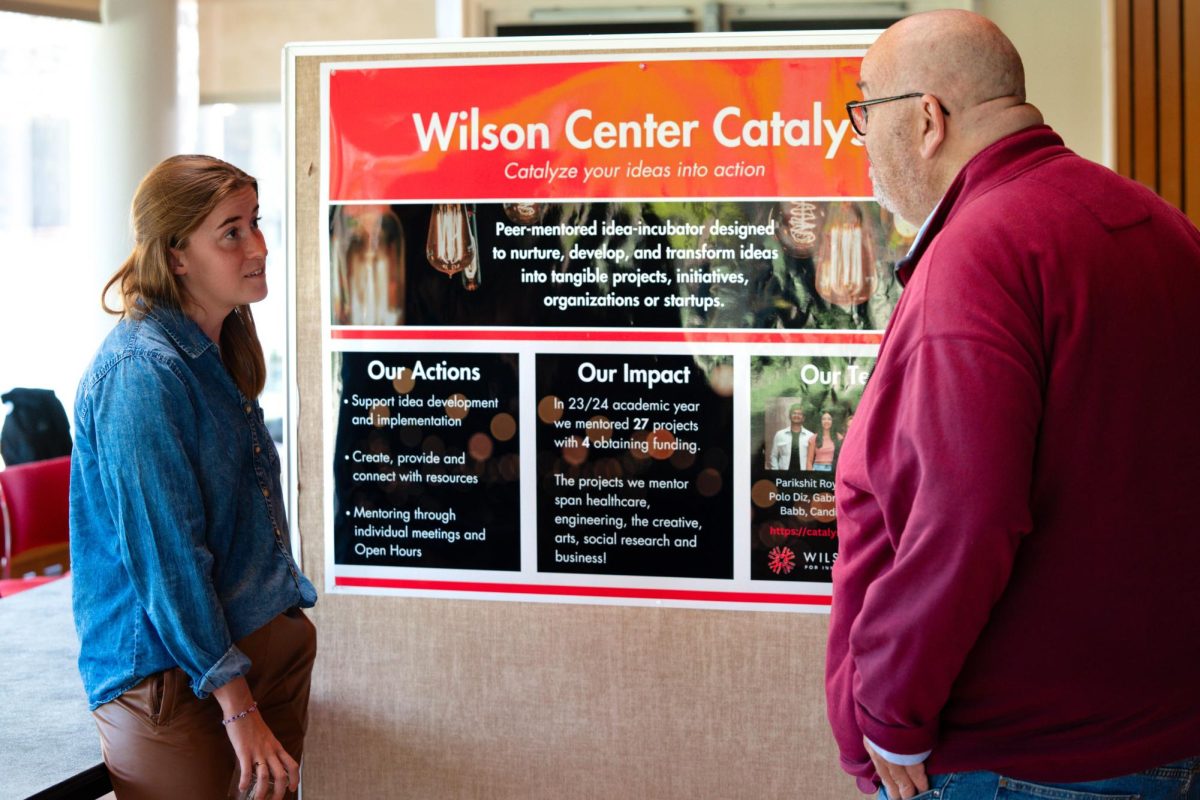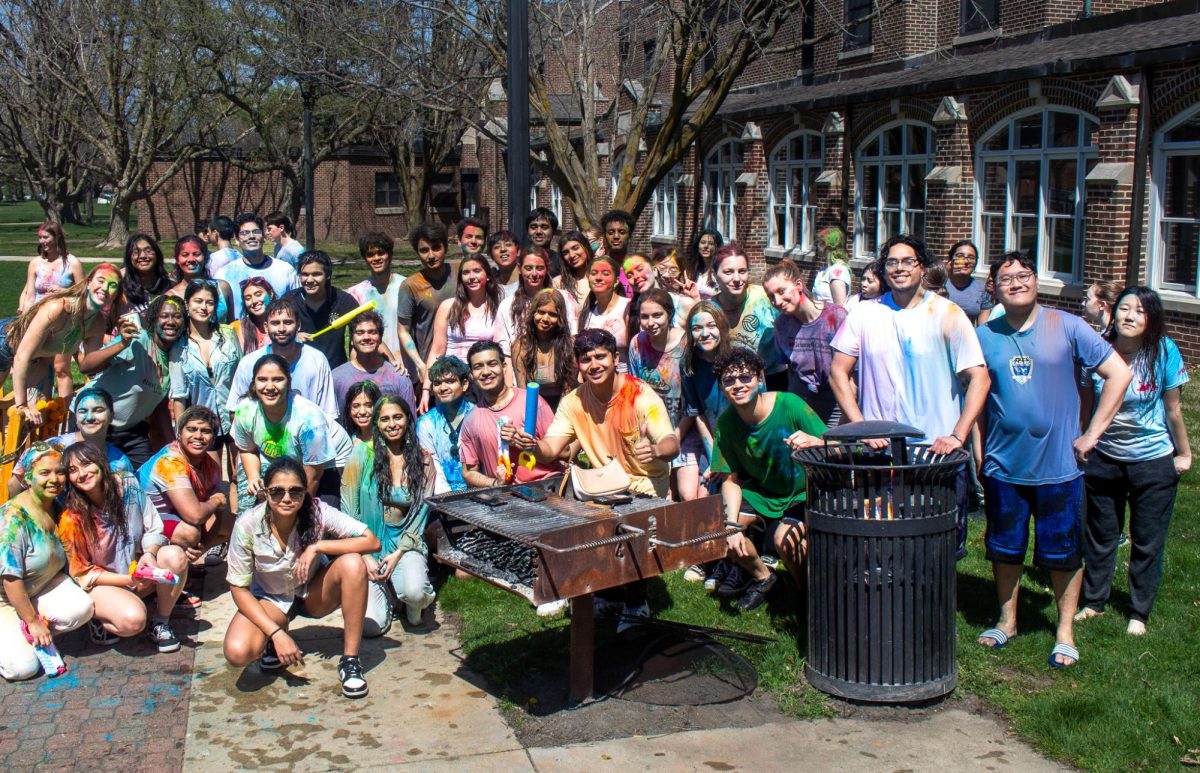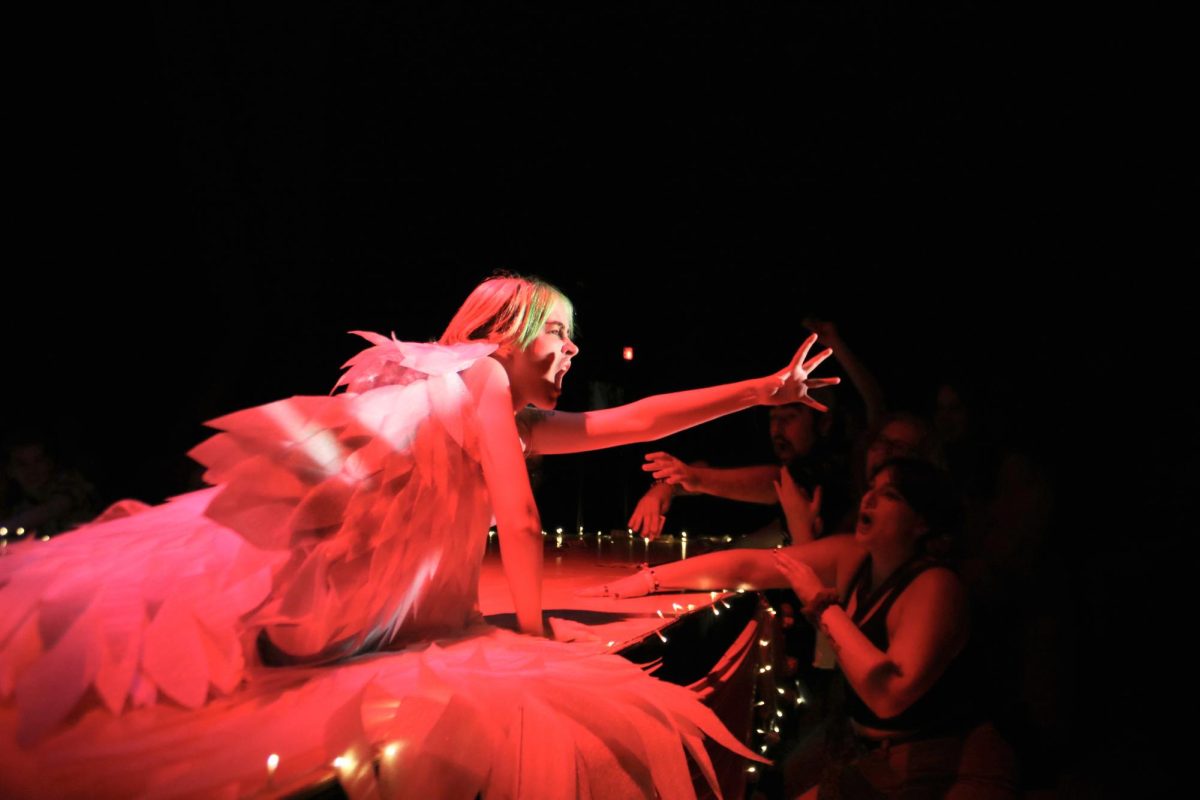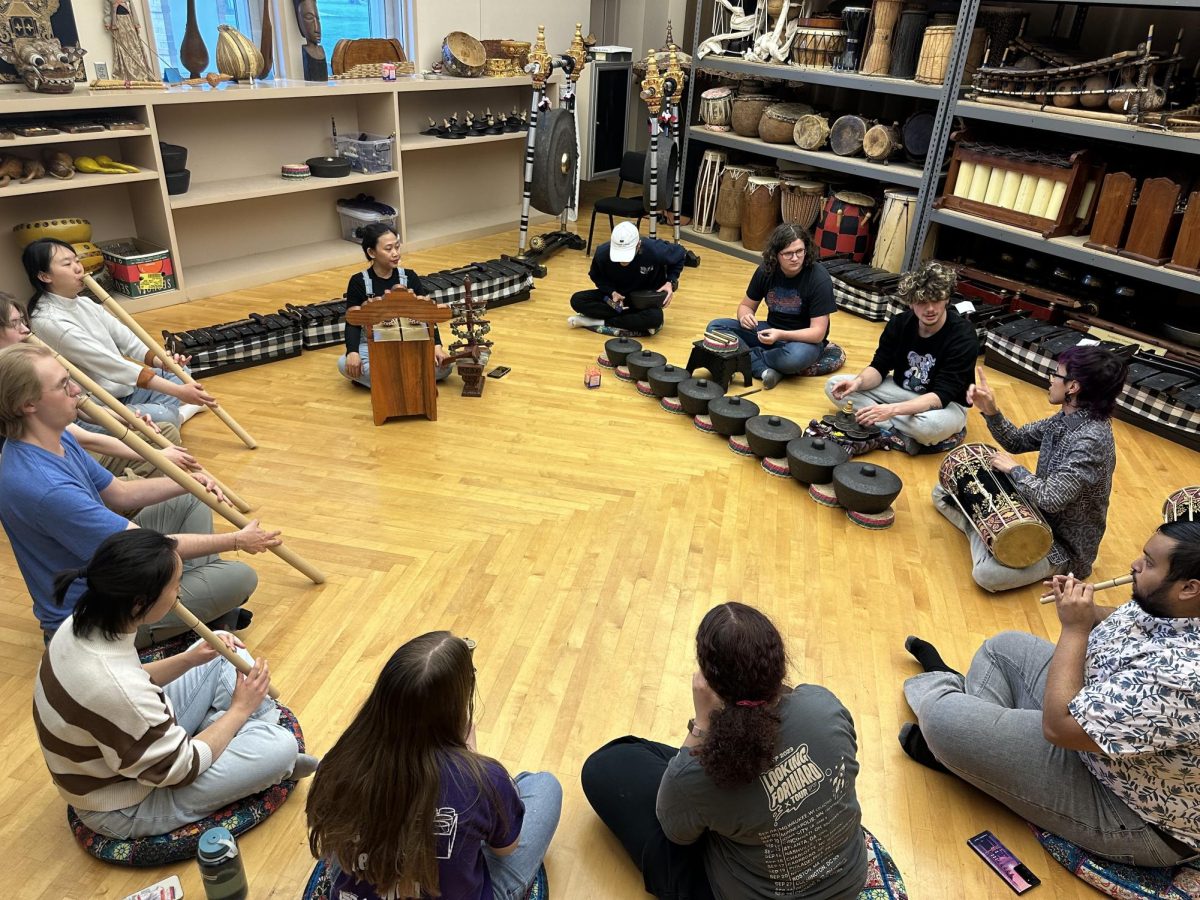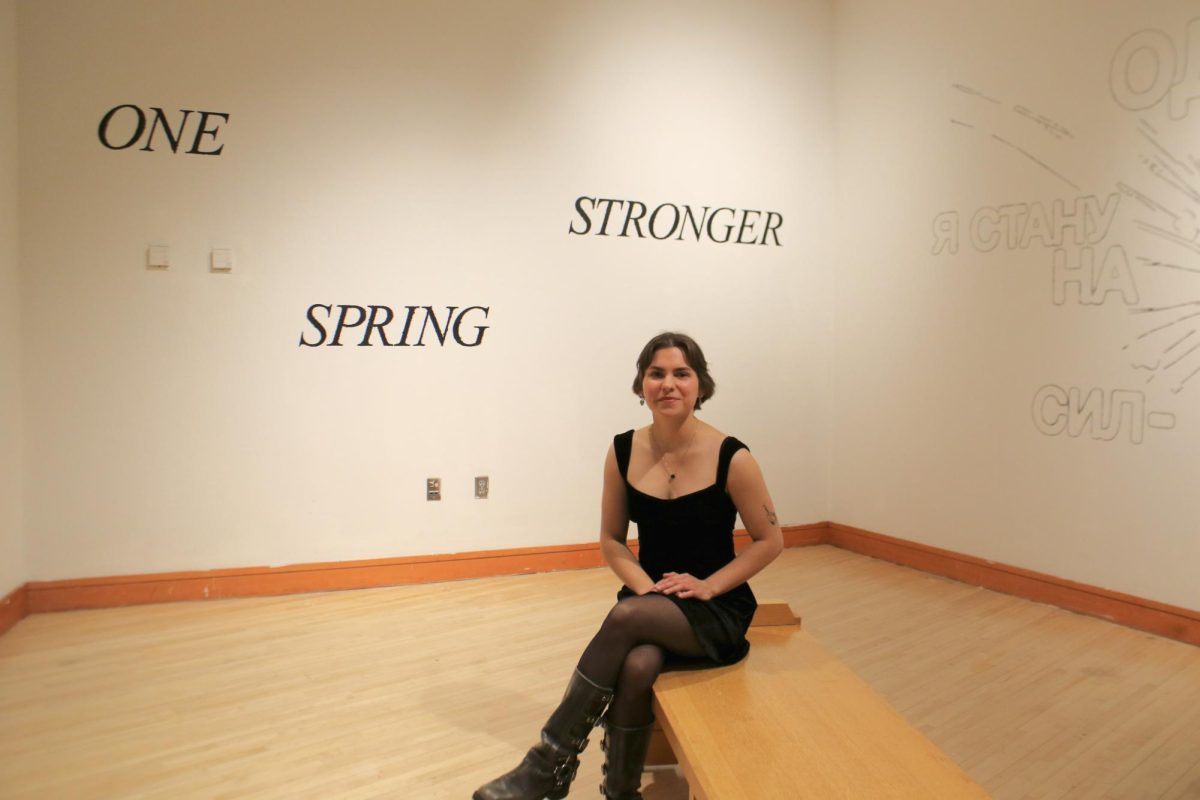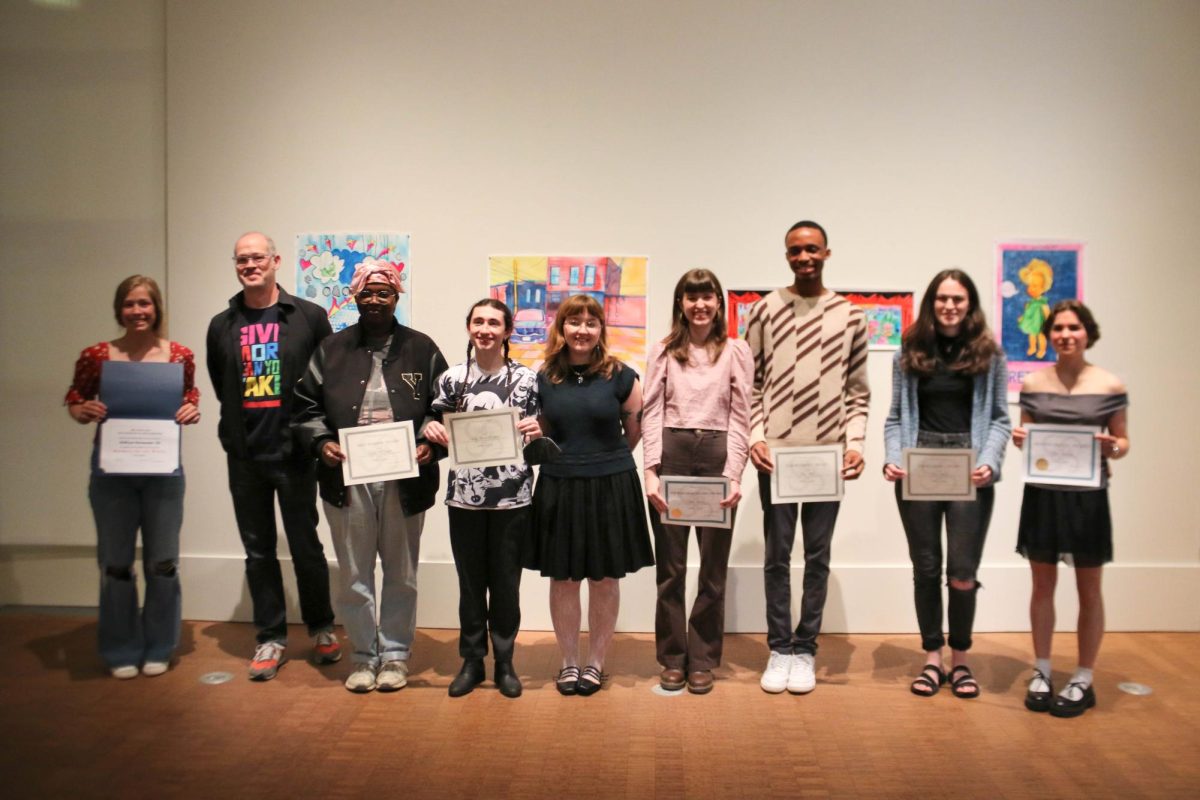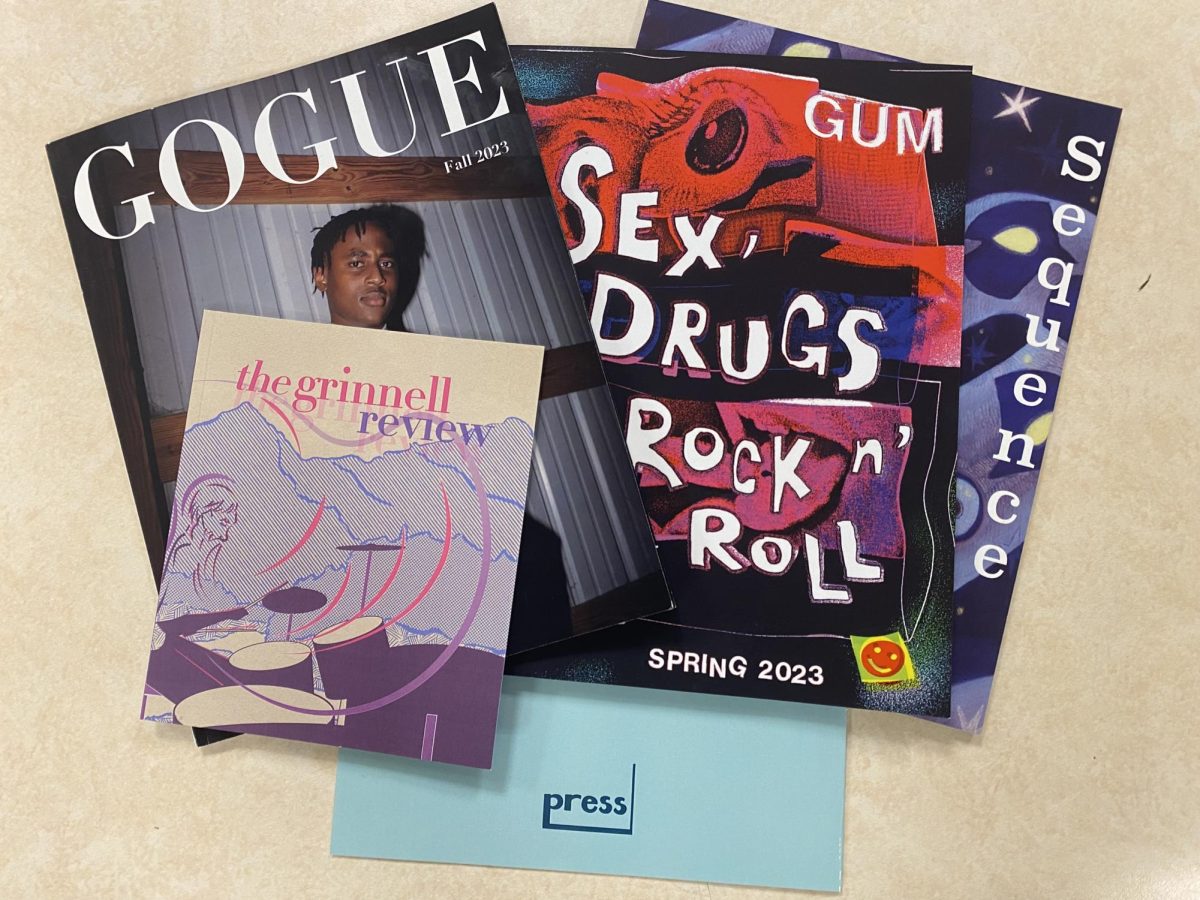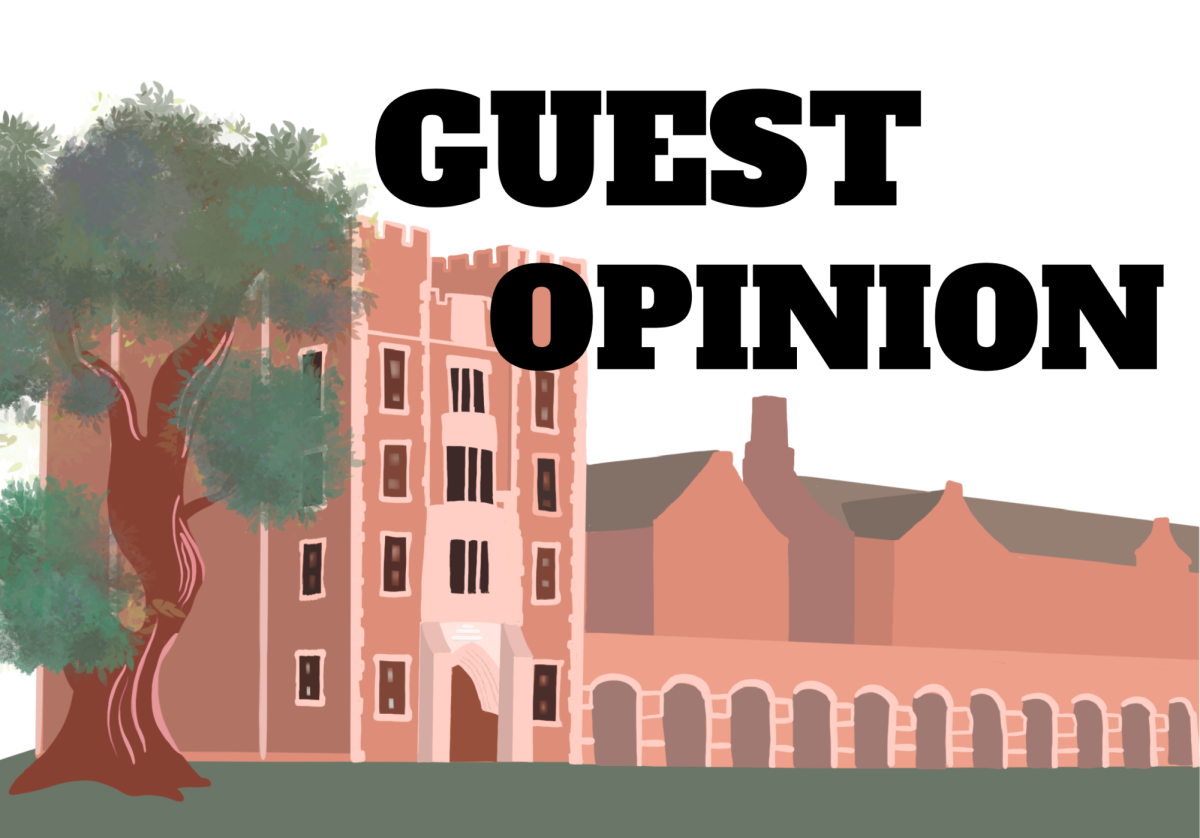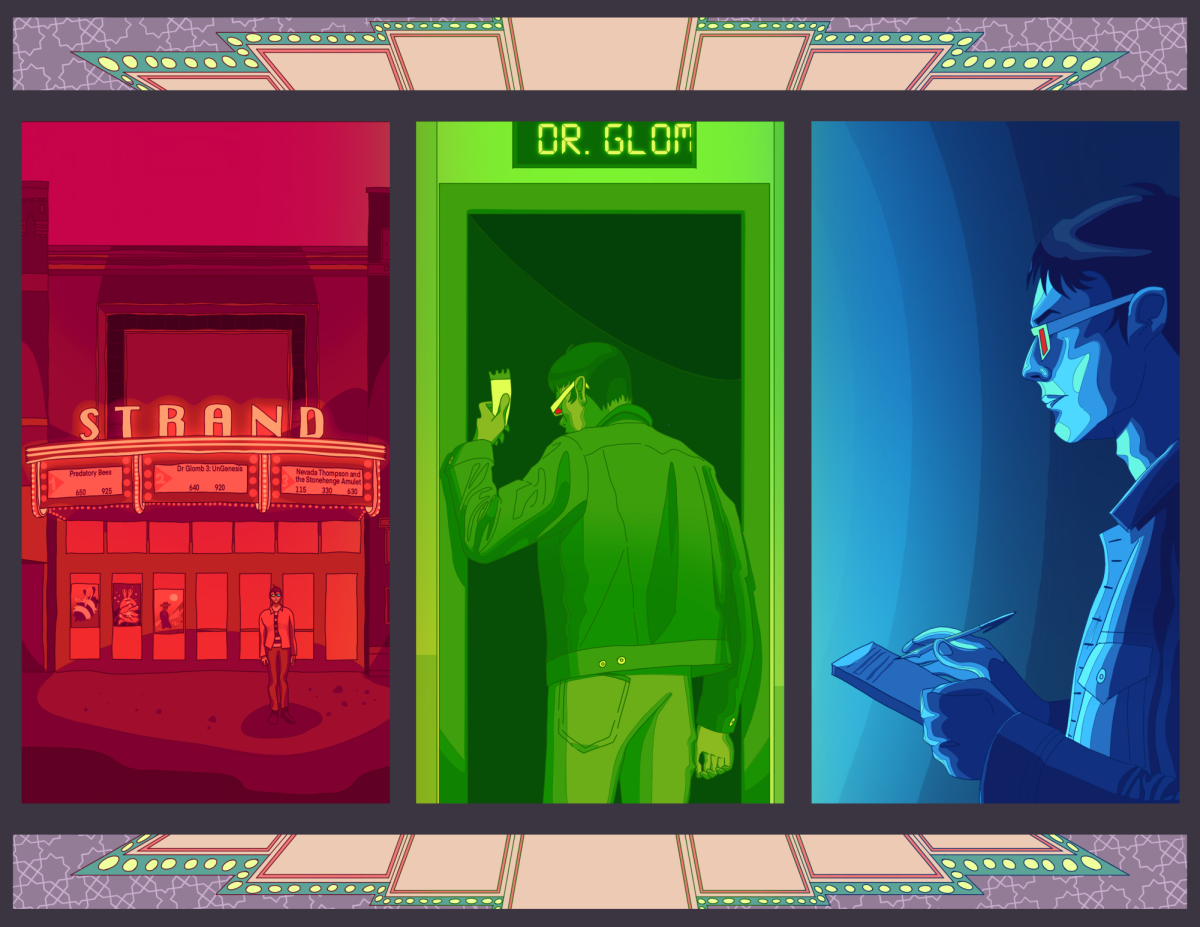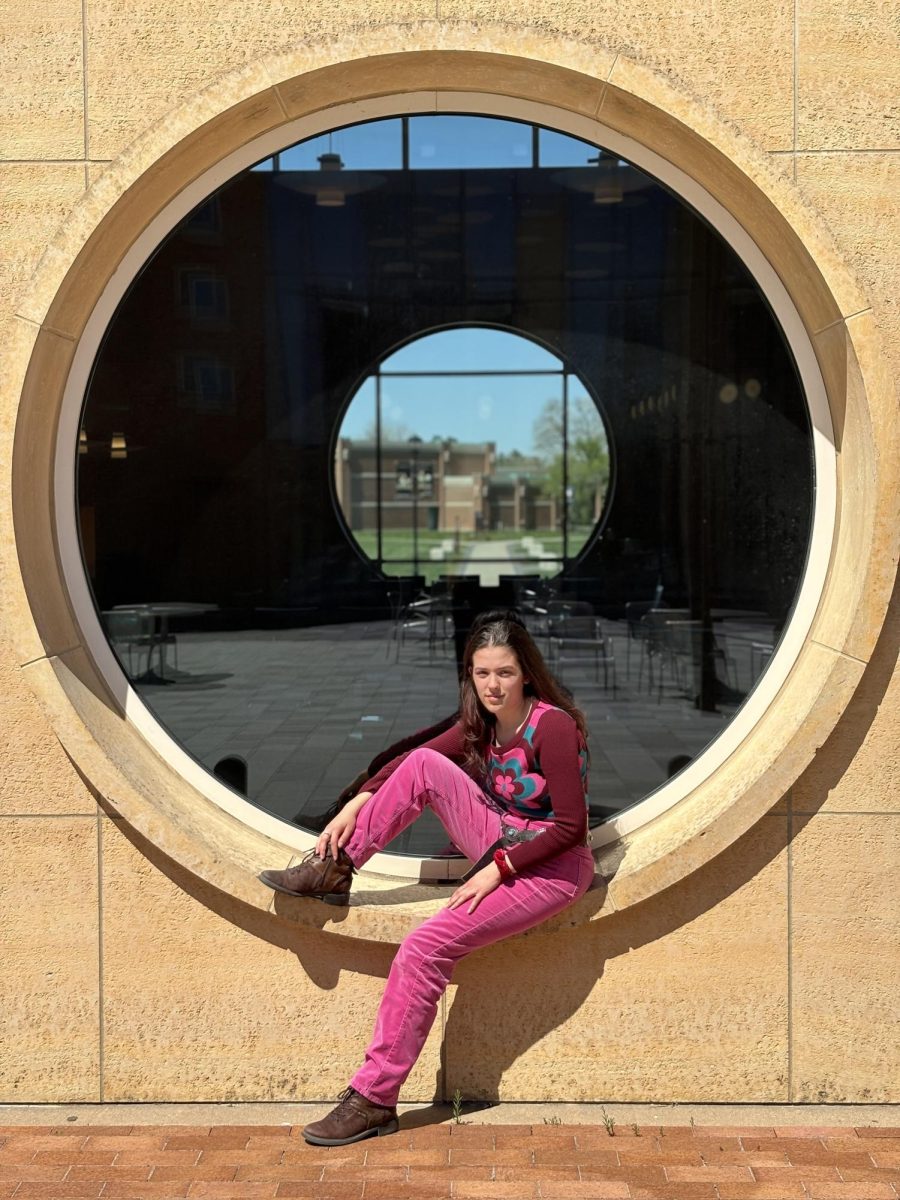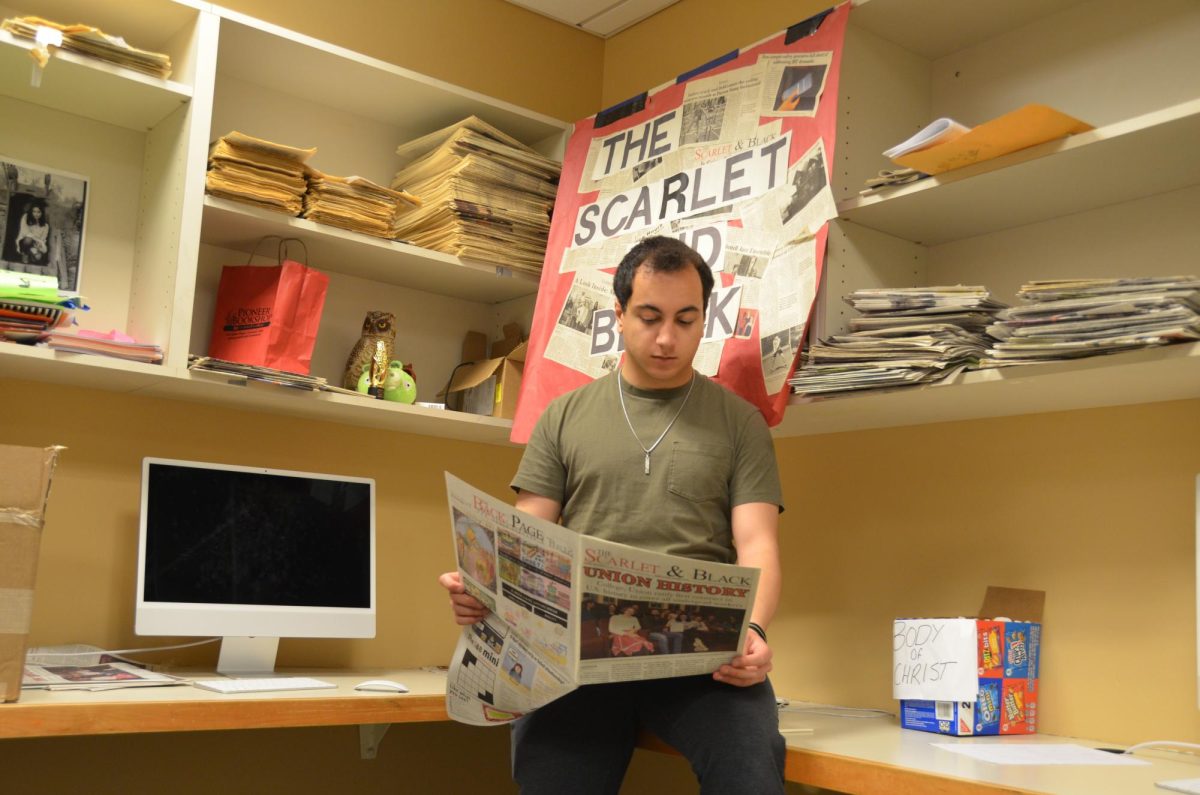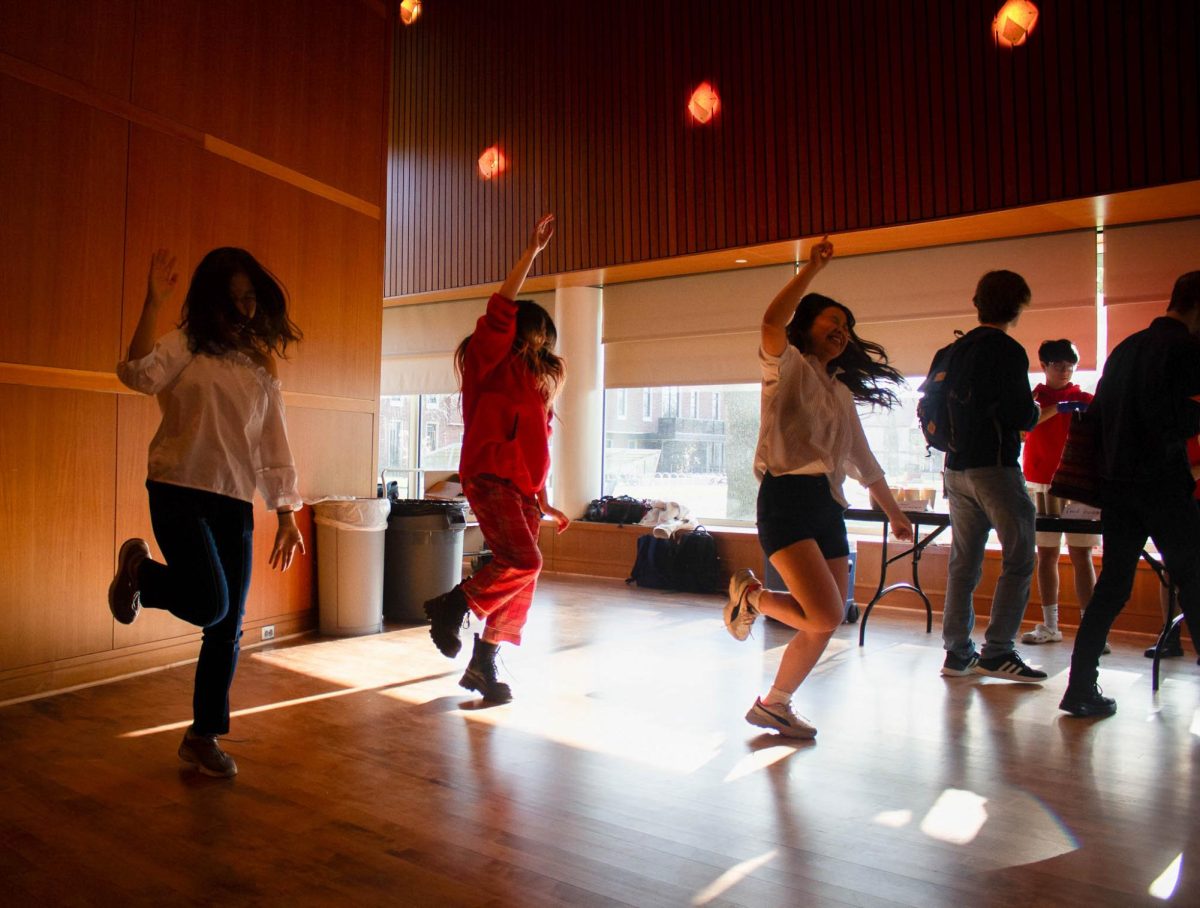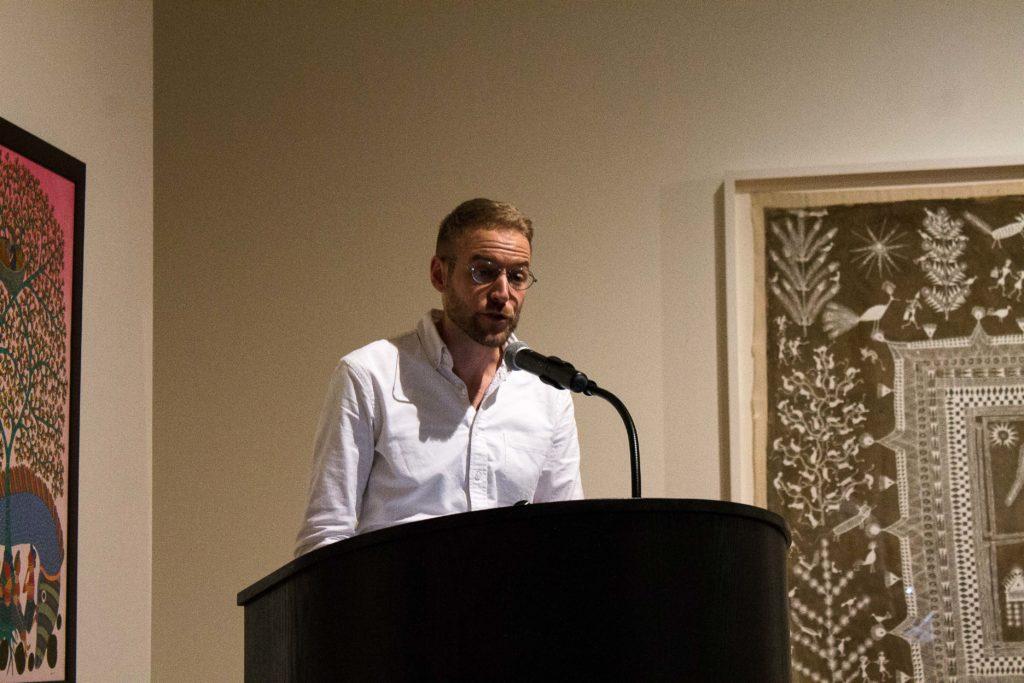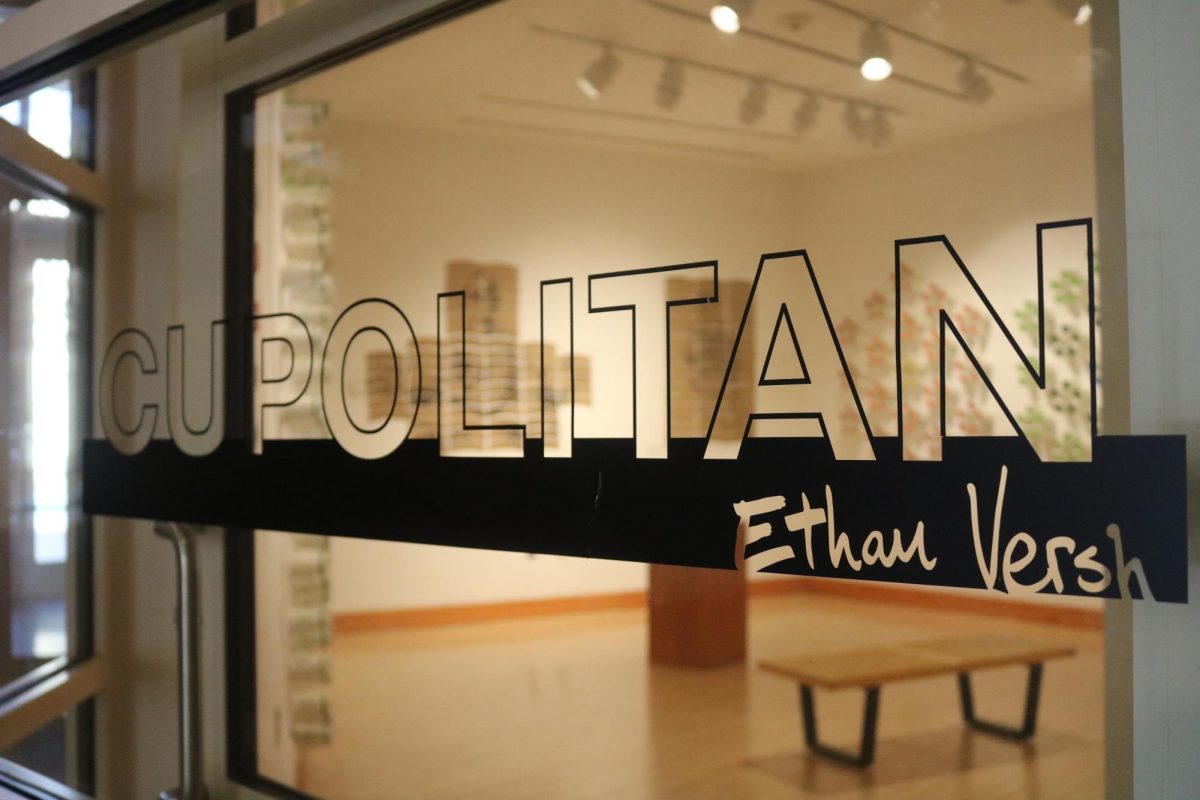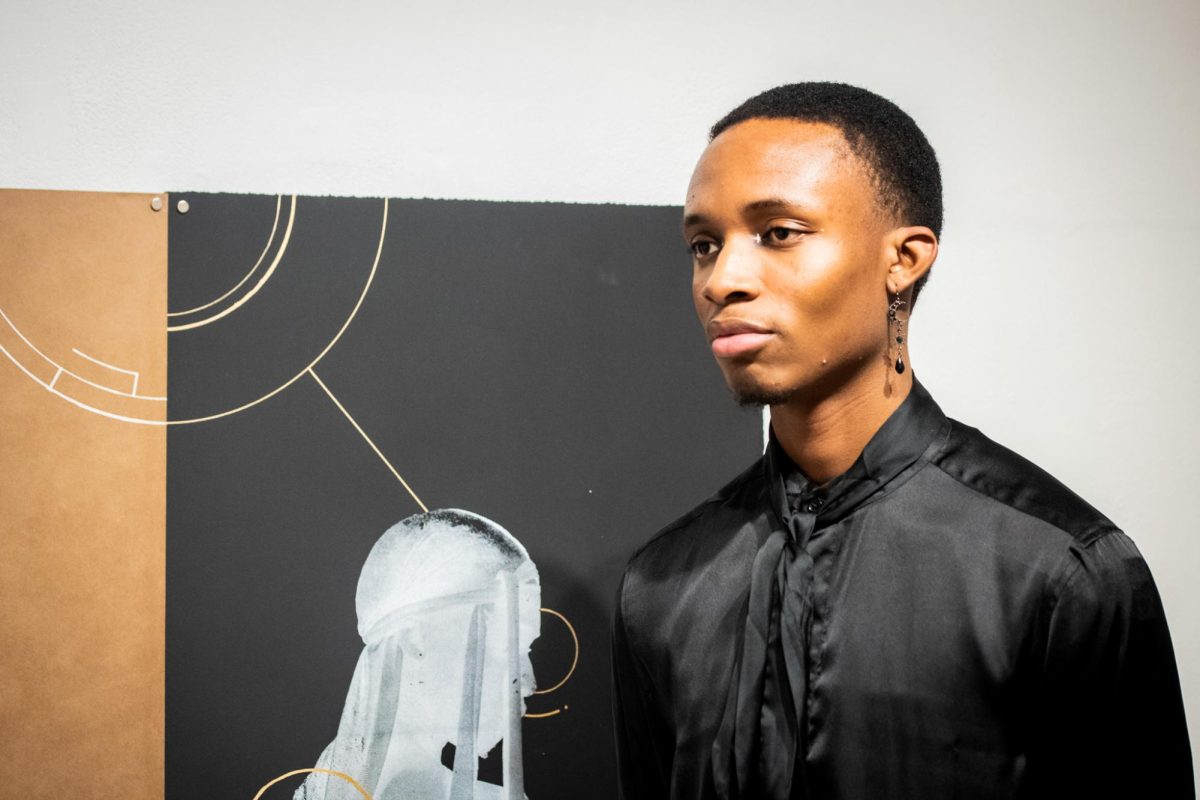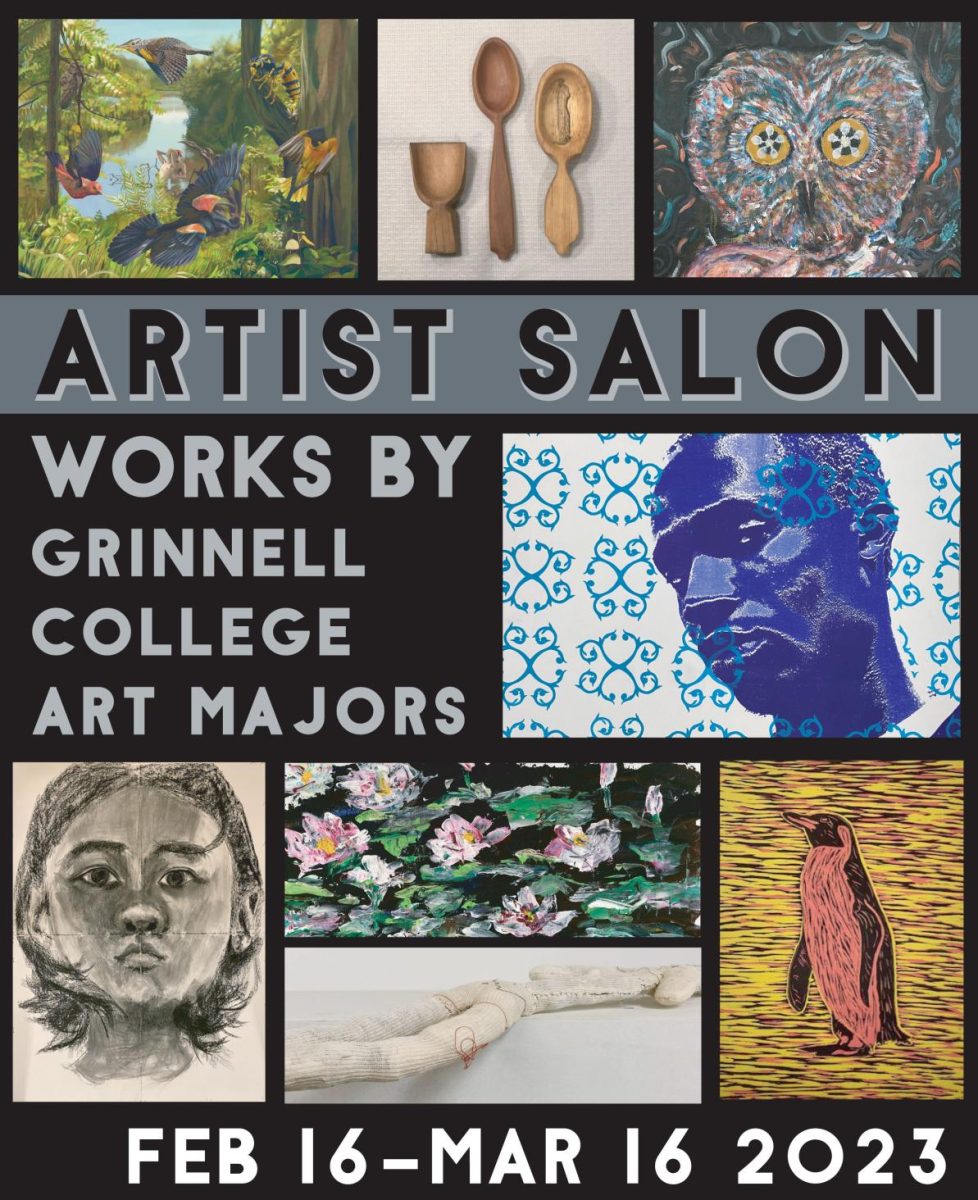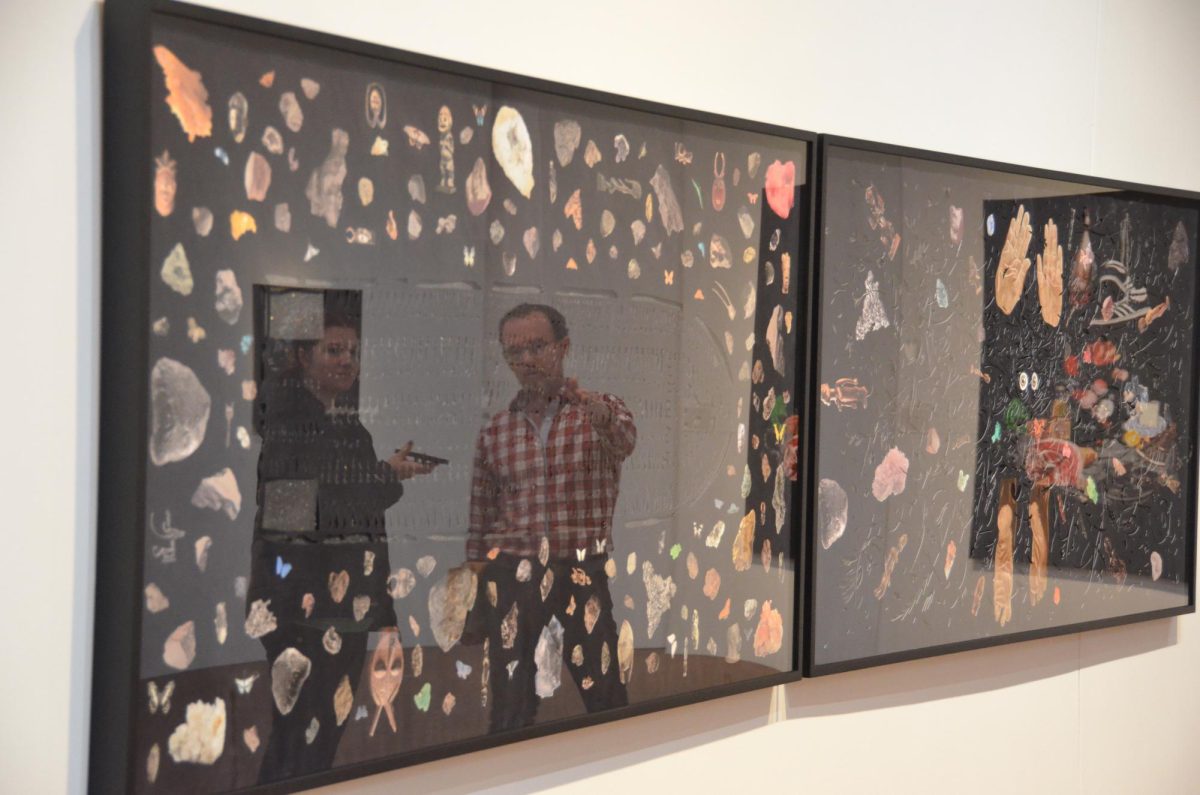By Hallela Hinton-Williams
hintonwi@grinnell.edu
Surrounded by the art of a different continent, Brendon McMahon’s interest in the use of feathers in the artwork of the modern Hispanic world has stark contrasts with the paintings originating from India in Faulconer’s current exhibition. However, there are similarities in the global and cultural significance, and in underlying allusions to the divine and nature.
McMahon delved into the work of feathered micro carvings used in Hispanic artwork. In his speech, he highlighted the importance of the hummingbird feathers to show themes of the divine, nature, materiality and epistemology. In his work, McMahon uses archives, the work of researchers and the observations of explorers to the Spanish Americas to understand the significance of feathers, especially those of the hummingbird.
In the analysis of his research, McMahon finds that the scale, color and behavior of the hummingbird were specifically intriguing to artists and observers and is integrated into the artwork in order to reflect the nature of God and the divine, human nature and other daunting themes that philosophers and artists were considering in their work.
“For discerning viewers, looking at a feathered micro carving was not an exercise of ruthless curiosity, but a rehearsal of knowledge that migrated alongside within the period,” McMahon said.
McMahon’s work is an exercise in delving deeper into a topic that has been rarely explored. He said that academics with different backgrounds and interests all find something intriguing in the research McMahon has been conducting, as well as in its conclusions.
“My reason I like the topic is that it can grab people from a lot of different backgrounds and perspectives. … My dream is to have these conversations with as many people as possible,” McMahon said.
McMahon was always drawn to this research and enjoys the challenges that come up, especially since this kind of research into feathers in Hispanic art is fairly unprecedented.
“I love birds. My dad is a big bird watcher. I was drawn immediately to the objects because they were so visually exciting. People haven’t really thought about these specific objects and how that could contribute to meaning,” McMahon said. “I’ve been hunting these objects down because a lot aren’t in public collections. Every time I find a new one it is like another feather in my cap. … There is so much more out there.”
McMahon sees his research expanding to change the way we perceive art based on geographic region.
“There’s a real interest in globalizing disciplines, like art histories that have pretty narrowly focused in the past. Any object that was made in an interesting place is an opportunity to move art history into a less euro-centric mold, to think about other places besides Renaissance Florence as a worthy place to think about art.”
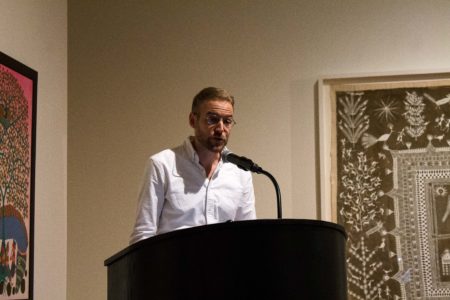
Photo by Reina Shahi














